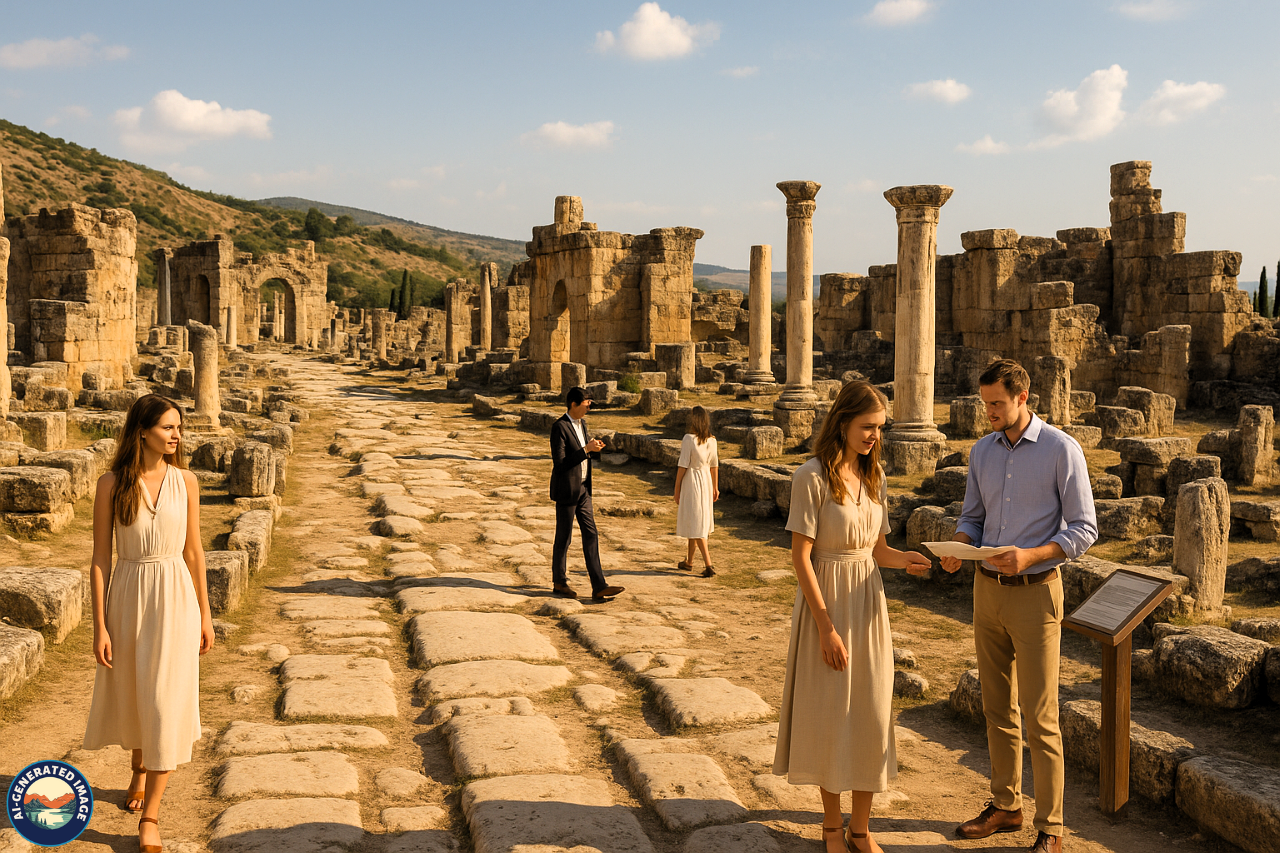
Located in southwestern Turkey, Hierapolis is a magnificent ancient city where history, architecture, and natural beauty meet. Perched above the white travertine terraces of Pamukkale, Hierapolis was once a bustling Greco-Roman metropolis, known for its sacred thermal springs, grand structures, and spiritual significance. Today, the ruins of this remarkable city, together with Pamukkale’s terraces, are protected as a UNESCO World Heritage Site, drawing visitors from across the globe.
In this guide, we explore the fascinating past, architectural marvels, cultural significance, and travel tips for visiting Hierapolis.
Introduction
Hierapolis lies in Turkey’s Denizli Province, near the town of Pamukkale. Built around natural hot springs, this ancient city was both a religious sanctuary and a place for healing. People in antiquity believed that the mineral-rich waters possessed curative powers, attracting pilgrims, the ailing, and wealthy visitors seeking relief and rejuvenation.
Aside from its fame as a spa city, Hierapolis thrived as a center of culture, religion, and commerce during the Roman and Byzantine periods. The combination of natural splendor and impressive ruins makes it one of Turkey’s most captivating heritage sites.
History
The Beginnings of Hierapolis
Founded in the early 2nd century BCE by the Attalid kings of Pergamon, Hierapolis was designed as a religious center and settlement. The city’s name, meaning “Holy City,” reflected its sacred nature. Thanks to its location at the crossroads of key trade routes in Asia Minor, Hierapolis soon grew in prominence.
Its setting near hot springs not only provided a vital water source but also became central to its reputation as a place of healing and wellness.
Roman and Byzantine Eras
Under Roman rule, Hierapolis flourished. The city saw large-scale construction of temples, bathhouses, fountains, theatres, and city gates. The Temple of Apollo became a focal point for worship, while the Plutonium, a cave emitting deadly gases, gained a reputation as a portal to the underworld.
During the Byzantine period, Hierapolis evolved into a significant Christian hub. The city was closely linked to Saint Philip the Apostle, who is believed to have been martyred there. Christianity reshaped the cityscape, with the construction of churches and the conversion of existing buildings into places of Christian worship.
Decline and Rediscovery
Hierapolis suffered from devastating earthquakes, with a major one in 60 CE causing extensive damage. Although the city was repeatedly rebuilt, it gradually declined in importance. By the medieval period, it was largely abandoned.
European explorers rediscovered the ruins in the 19th century, sparking interest in their archaeological treasures. Since then, ongoing excavations have uncovered much of what we see today.
Main Attractions
The Grand Theatre
The theatre of Hierapolis is among the best-preserved in the ancient world. It could hold up to 12,000 spectators and boasts an elaborate stage decorated with carvings and reliefs depicting gods, emperors, and mythological scenes. The theatre hosted plays, ceremonies, and public events, and it offers stunning views over the city and the surrounding landscape.
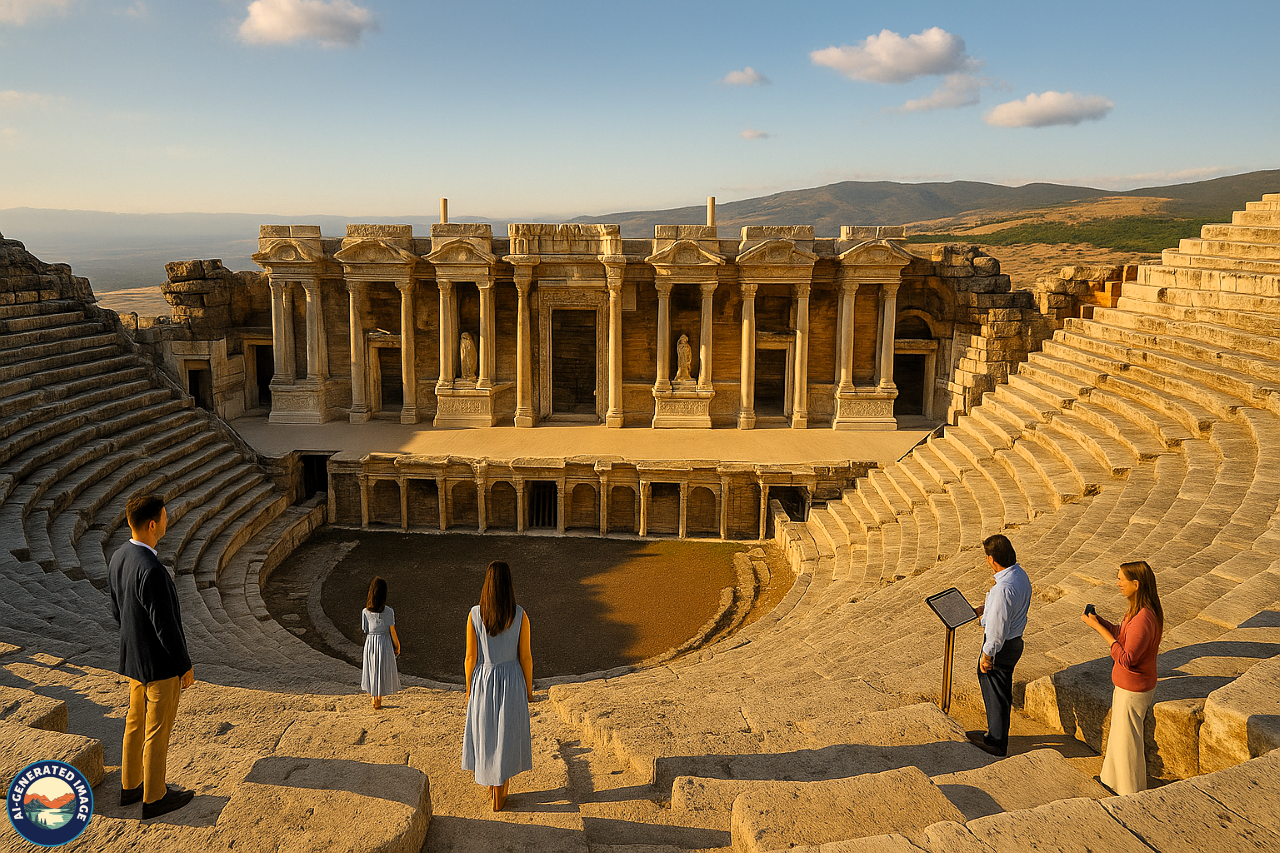
The Necropolis
Hierapolis is home to a vast necropolis, one of the largest in the region. Stretching over two kilometers, it contains thousands of tombs — from simple limestone sarcophagi to monumental family mausoleums and tumuli (burial mounds). Many came to Hierapolis in their final days, hoping the sacred springs would ease their suffering and secure a blessed afterlife.
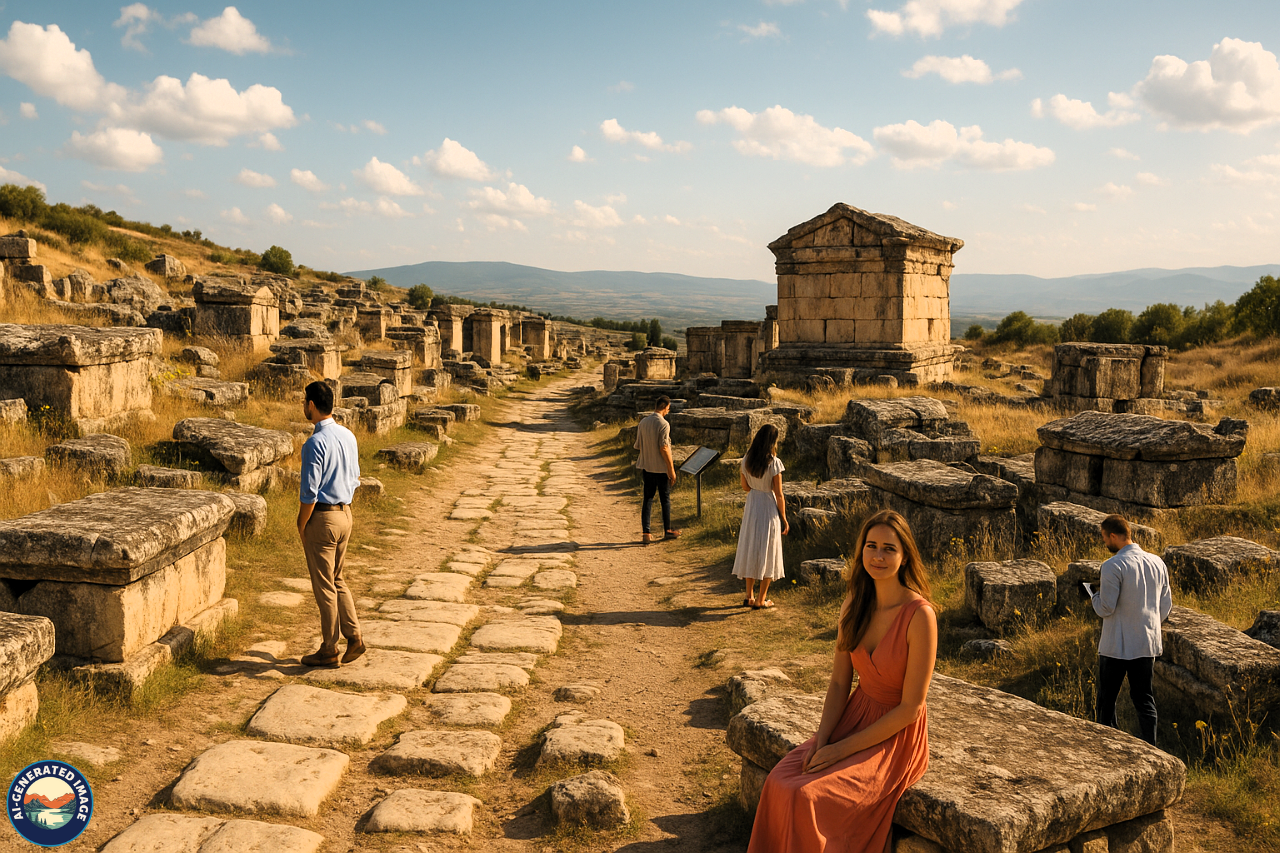
The Temple of Apollo and the Plutonium
Dedicated to the city’s primary god, the Temple of Apollo once stood as an imposing religious site. Close by is the Plutonium, an eerie cave that emits toxic gases. Ancient priests would perform rituals here, reinforcing the site’s mystical reputation as an entrance to the underworld.
The Temple of Apollo
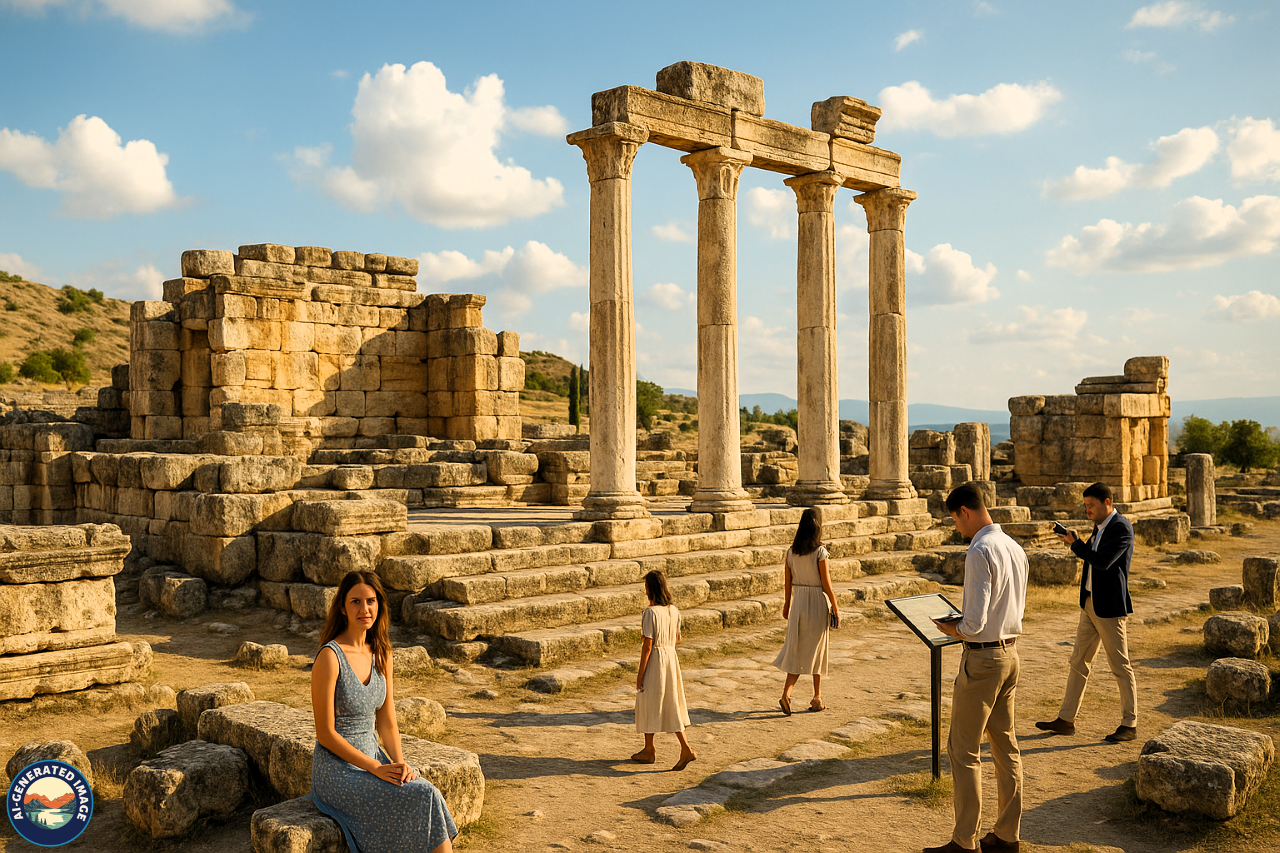
The Plutonium
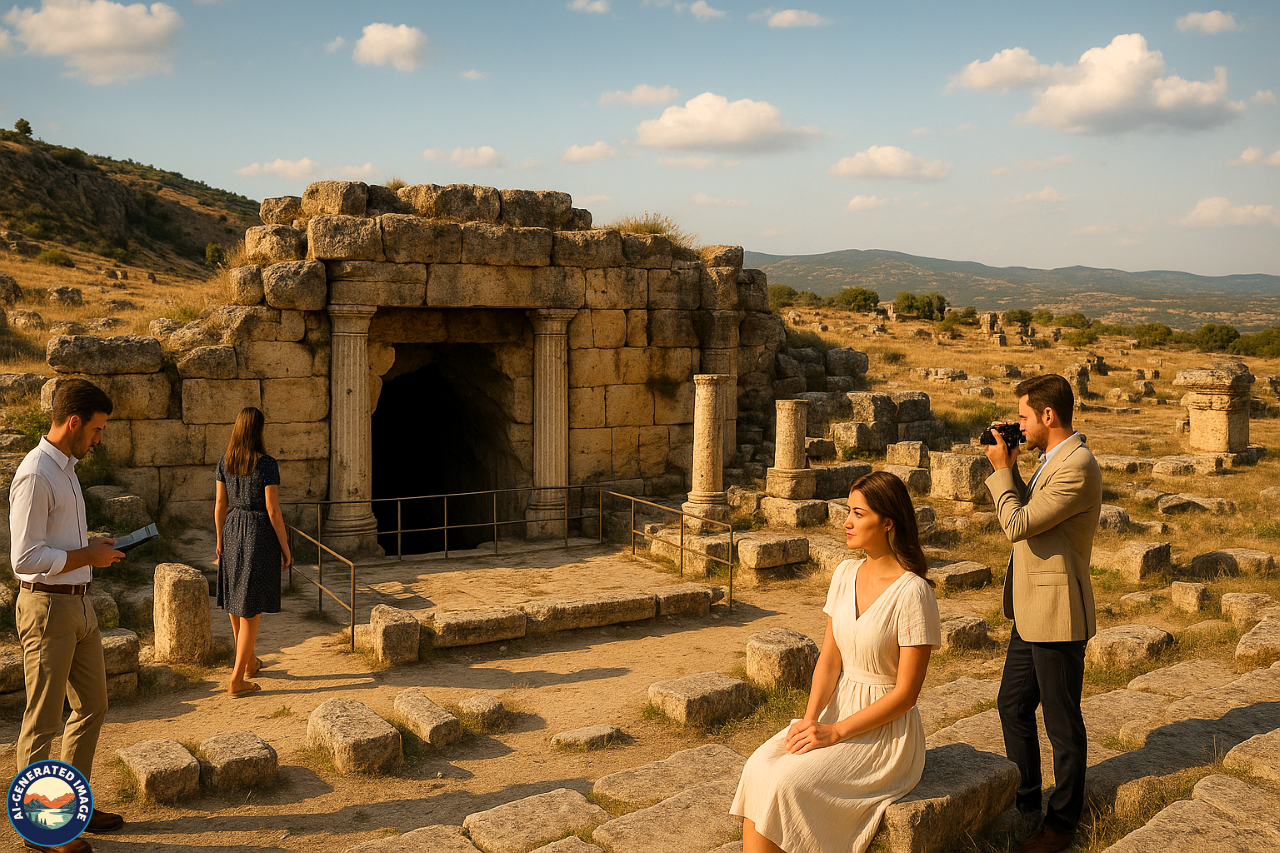
Nymphaea and City Gates
Hierapolis featured splendid public fountains, or nymphaea, supplied by aqueducts. These fountains not only added beauty but also provided drinking water. The city gates, such as the well-preserved Domitian Gate, marked the entrances to Hierapolis and symbolized its grandeur.
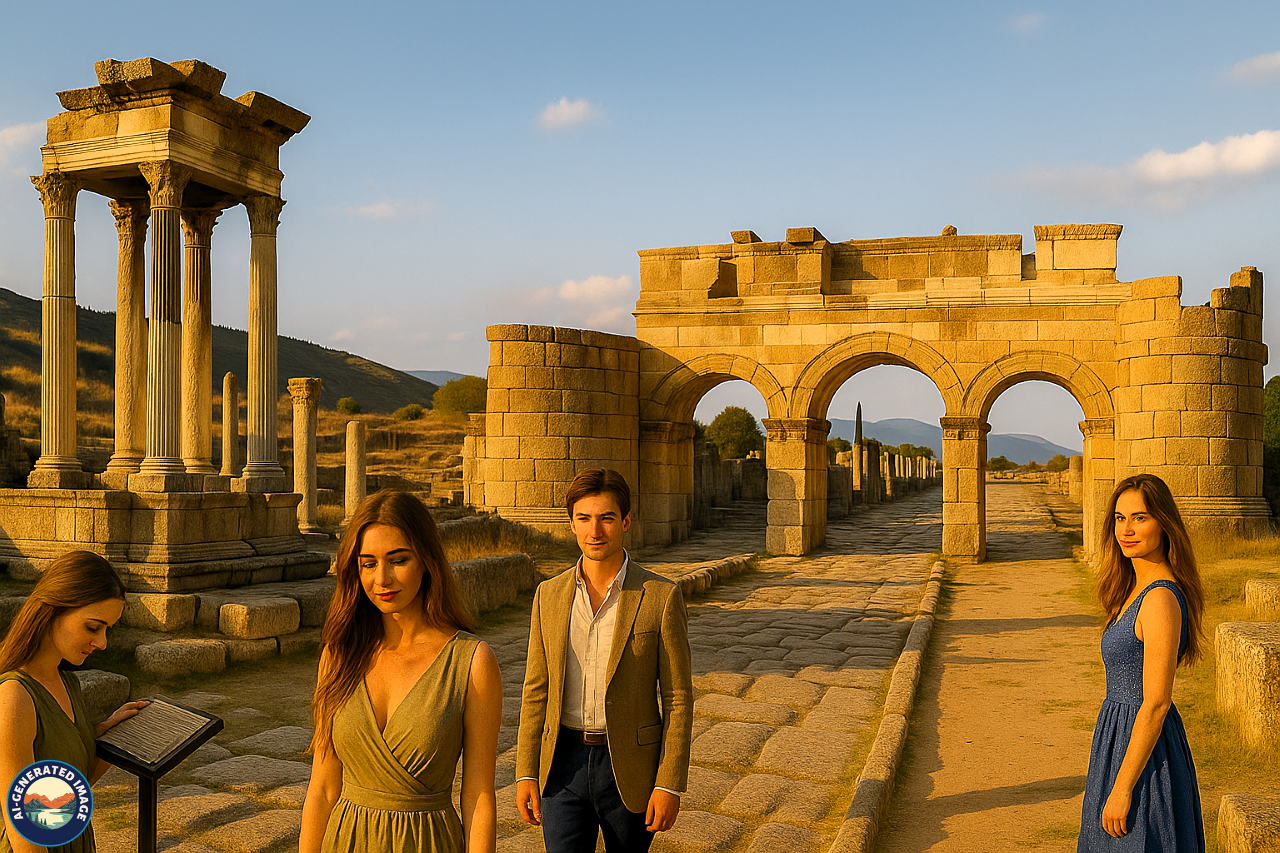
Baths and Basilica
The Roman baths were central to the city’s identity as a spa destination. They served as places for relaxation and social interaction. In later centuries, some of these structures were repurposed as Christian basilicas, reflecting the city’s changing spiritual landscape.
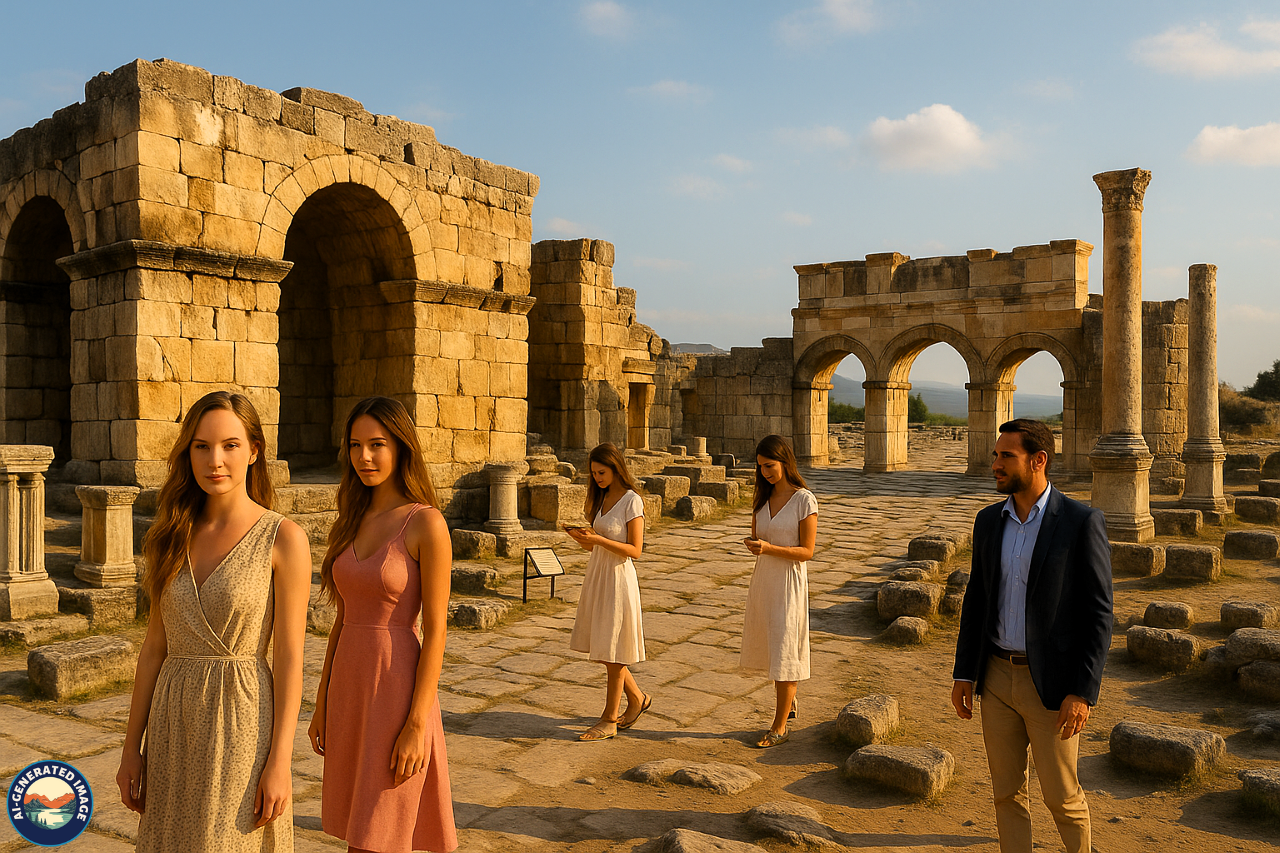
The Natural Link Between Hierapolis and Pamukkale
Hierapolis owes much of its fame to its proximity to the Pamukkale travertines — dazzling white terraces formed by calcium deposits from hot springs. These terraces, resembling frozen waterfalls, were believed to possess powerful healing properties. The symbiotic relationship between the city and its natural surroundings played a key role in its growth and spiritual status.
Today, visitors can walk barefoot on designated sections of the terraces and even bathe in pools fed by the thermal waters.
Archaeology and Preservation Efforts
Archaeological work at Hierapolis began in earnest in the late 1800s and has continued ever since. Italian teams have led much of the excavation, unearthing statues, inscriptions, mosaics, coins, and architectural elements that reveal the city’s rich history.
Conservation initiatives now aim to balance tourism with preservation. Special pathways and visitor rules help protect both the ruins and the fragile travertine formations.
Planning Your Visit
Getting There
Hierapolis is easily accessible via Denizli, a city with good rail, road, and air connections. From Denizli, minibuses or taxis can take visitors to Pamukkale village, just a short distance from the site.
Guided tours are widely available and are a convenient way to explore Hierapolis and Pamukkale together.
Ideal Seasons
The best times to visit Hierapolis are spring and autumn, when the climate is pleasant, and the crowds are smaller. Summer can be very hot, while winter may bring rain.
What You’ll See
Expect to visit:
-
The theatre
-
The expansive necropolis
-
The Antique Pool (Cleopatra’s Pool), where you can swim among submerged ancient columns
-
The remains of the temple complex
-
The Hierapolis Museum, showcasing artifacts recovered from the site
Sustainable Tourism Tips
-
Stay on designated walkways to protect the site.
-
Avoid damaging structures or removing any items.
-
Follow local guidelines when swimming or walking on the travertines.
The Legacy of Hierapolis
Hierapolis continues to inspire and educate. Its ruins tell stories of ancient faith, healing, and human endeavor. The city’s spiritual significance as the martyrdom site of Saint Philip makes it important to Christian heritage, while its architectural wonders attract history enthusiasts from around the world.
Hierapolis remains a symbol of Turkey’s rich tapestry of civilizations — a place where natural beauty and human achievement combine to create a timeless legacy.
Conclusion
A visit to Hierapolis is like stepping into a living history book. The city’s grand ruins, sacred springs, and breathtaking landscape offer a unique glimpse into the ancient world. From its healing waters to its monumental structures, Hierapolis continues to captivate the imagination and invite exploration. By protecting this heritage, we ensure that future generations can experience its magic as we do today.
FAQs
Where can I find Hierapolis?
Hierapolis is located near Pamukkale in Denizli Province, southwestern Turkey.
What makes Hierapolis special?
Hierapolis is famous for its ancient ruins, thermal springs, and its close connection to the white travertine terraces of Pamukkale.
Can I swim in the pools?
Yes. The Antique Pool, also called Cleopatra’s Pool, is open for visitors to swim among submerged ancient columns.
Is Hierapolis recognized by UNESCO?
Yes. Hierapolis and Pamukkale have been listed as a UNESCO World Heritage Site since 1988.
How long does it take to tour Hierapolis?
Visitors typically spend half a day to a full day exploring Hierapolis and Pamukkale together.
What is the Plutonium at Hierapolis?
The Plutonium is a small cave near the Temple of Apollo. In ancient times, due to its toxic gases, it was believed to be an entrance to the underworld.
Are guided tours offered?
Absolutely. Numerous tour companies offer guided visits to Hierapolis, often combined with Pamukkale.
